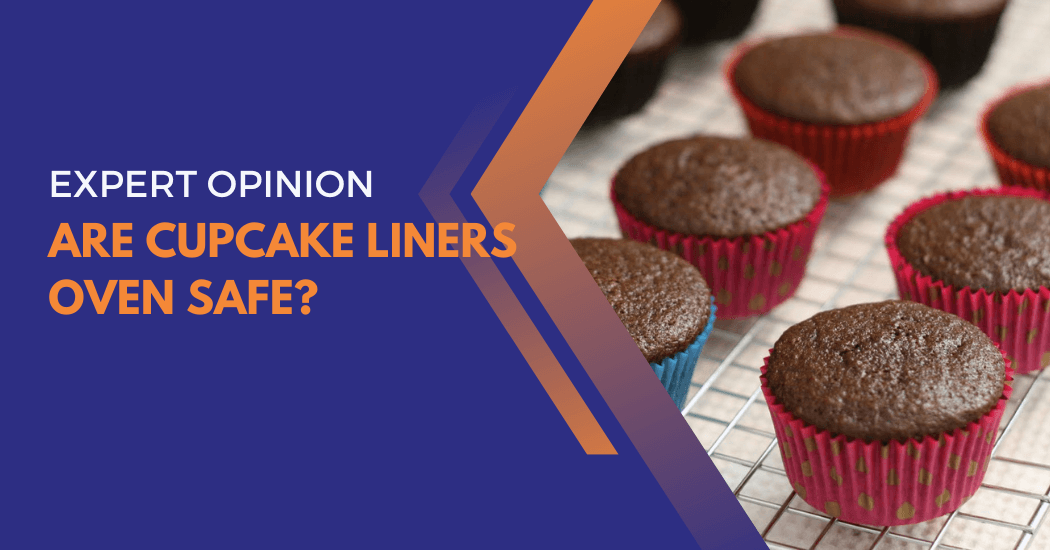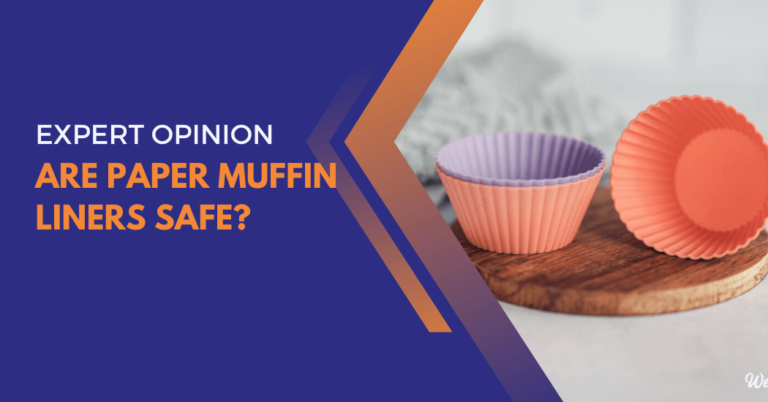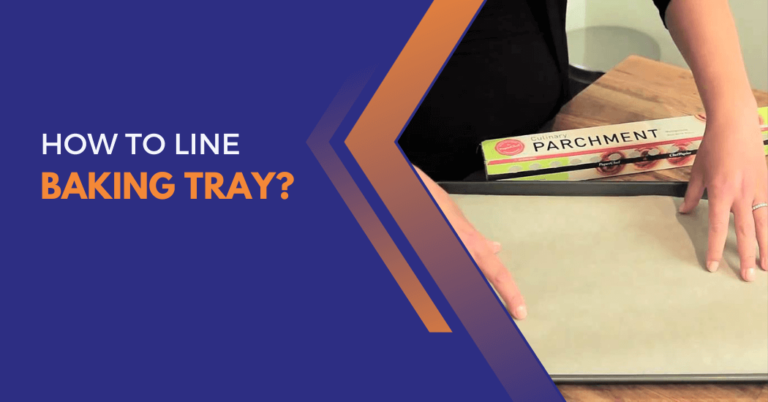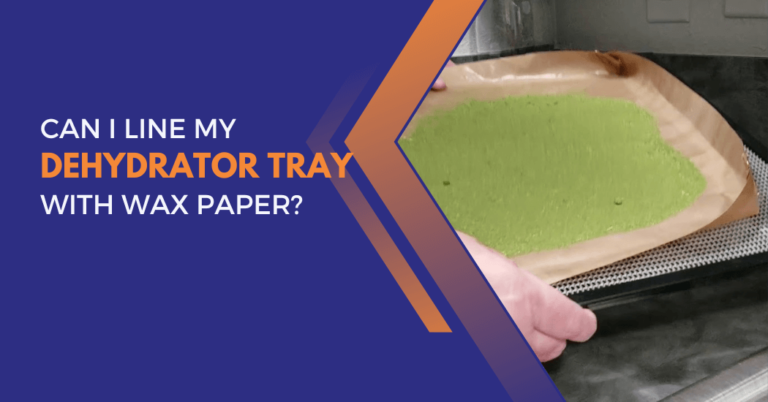Are paper cupcake liners oven safe?
In the realm of baking, the choice of utensils and tools plays a pivotal role in the success of a recipe. Among the commonly used items are paper cupcake liners, which add both convenience and aesthetics to the baking process.
However, a pertinent question arises: Are paper cupcake liners oven-safe? This query is crucial for ensuring the safety and desired outcomes of your culinary endeavors.
In this exploration, we will delve into the characteristics of paper cupcake liners, examining their heat resistance and suitability for oven use.
Understanding the nuances of these seemingly simple kitchen accessories is essential for every avid baker aiming to create delectable treats with precision and confidence.
Basics of paper cupcake liners
Cupcake liners also known as paper cupcake liners or baking cups, are a staple in every baker’s kitchen. These small paper cups are used to line muffin or cupcake tins to prevent the batter from sticking to the pan. They not only make for easier clean-up but also add a decorative touch to your baked goods.
Most cupcake liners are made of paper, specifically greaseproof or wax-coated paper. This type of paper is resistant to oil and moisture, making it ideal for baking. It also helps to keep the cupcakes from sticking to the liner.
In addition to being functional, cupcake liners come in a variety of colors, patterns and designs. Some are even made of foil or metallic paper, which are perfect for special occasions and add a touch of glamour to your cupcakes.
The thickness of the paper used for cupcake liners can also vary. Thicker liners are more sturdy and hold their shape better, while thinner ones may become flimsy when exposed to moisture from the batter.
Are paper cupcake liners oven-safe?
Indeed, paper cupcake liners are oven-safe and are designed to withstand the temperatures typically used in baking processes. Most paper liners can endure heat up to 420-450°F (216-232°C), which is much higher than the average baking temperature for cupcakes, which is usually around 350°F (177°C).
However, it is recommended to check the product specifications before using them in the oven. While these liners provide convenience, it’s also essential to place them in a muffin tin or cupcake tray for support. This setup ensures the batter doesn’t spill or overflow, leading to evenly baked, delightful cupcakes.
Different types of cupcake liners and their oven-safety
As mentioned earlier, cupcake liners come in various materials and designs. These variations also affect their oven safety.
Let’s take a closer look at some common types of cupcake liners and how they fare in the oven.
- Paper liners: Paper liners are oven-safe and the most commonly used type of cupcake liner. However, they can become slightly discolored due to exposure to high heat and may also stick to the cupcakes if not properly greased beforehand.
- Foil/Metallic liners: These shiny and eye-catching liners are typically made of aluminum foil or metallic paper. They are not only oven-safe but also make for great heat conductors, ensuring even baking of the cupcakes.
- Silicone liners: Silicone cupcake liners have gained popularity in recent years due to their reusable nature and non-stick properties. They are safe to use in the oven and can withstand high temperatures without losing their shape or color.
- Glassine/Plastic liners: These types of liners are not recommended for use in the oven as they can melt or release harmful chemicals when exposed to high heat.
Factors to consider when choosing cupcake liners for your oven
While paper cupcake liners are oven-safe in general, it’s essential to consider a few factors when choosing the right ones for your specific oven.
- Size: Make sure to choose liners that fit snugly in your muffin tin or cupcake tray. Loose-fitting or too-small liners can cause the batter to spill and result in unevenly baked cupcakes.
- Thickness: As mentioned earlier, the thickness of the paper used for liners can vary. Thicker liners tend to hold their shape better and are less likely to become soggy due to moisture from the batter.
- Material: Consider the type of material used for the cupcake liners, especially if you have any allergies or dietary restrictions. Some liners may contain gluten, dairy or other allergens.
- Design: While aesthetics may not necessarily affect the oven safety of cupcake liners, it’s always fun to experiment with different colors and patterns to create visually appealing baked treats.
- Purpose: If you’re planning to use liners for hot and savory dishes, make sure to choose oven-safe options that can withstand high temperatures without melting or releasing harmful chemicals.
By understanding the basics of paper cupcake liners and their oven safety, you can confidently incorporate them into your baking routine and elevate the presentation of your cupcakes.
So go ahead, experiment with different types of liners and let your creativity shine through in every batch of delicious cupcakes you bake!
Tips for safe use of cupcake liners in the oven
To ensure safety and desired outcomes when using paper cupcake liners in the oven, here are a few helpful tips:
- Preheat the oven: Always preheat your oven before inserting the cupcake liners to ensure even baking and avoid overcooking.
- Grease the liners: If using paper liners, it’s recommended to lightly grease them with cooking spray or butter before adding the batter. This helps prevent sticking and makes removing the cupcakes from the liner easier.
- Place in a muffin tin or cupcake tray: As mentioned earlier, using a muffin tin or cupcake tray provides support for the liners and prevents them from becoming flimsy when exposed to moisture.
- Don’t overfill: Do not fill the liners to the top with batter, as this can cause them to overflow while baking. Leave some room for the cupcakes to rise and expand.
- Check for doneness: To ensure that your cupcakes are fully baked, insert a toothpick or cake tester in the center of one cupcake. If it comes out clean, they are ready to be taken out of the oven.
- Monitor baking time and temperature: Keep an eye on the baking time and temperature to prevent burning or undercooking of your cupcakes. Every oven is different, so it’s essential to adjust accordingly.
- Remove the liners after cooling: It’s recommended to let your cupcakes cool for a few minutes before removing them from the oven. This helps prevent any burns or spills and ensures that the liners come off cleanly without damaging the cupcakes.
- Follow the manufacturer’s instructions: Always read and follow the instructions provided by the manufacturer for the specific type of cupcake liners you are using to ensure safe and effective use in the oven.
By keeping these tips in mind, you can safely and successfully use cupcake liners in your oven and create delicious treats for any occasion.
Potential risks at higher temperatures and how to avoid them
While paper cupcake liners are generally safe for use in the oven, it’s essential to be aware of potential risks at higher temperatures and take precautions to avoid them.
- Fire hazard: If exposed to extremely high heat or left in the oven for too long, paper liners can catch fire. To prevent this, make sure to monitor baking time and temperature and never leave the oven unattended.
- Toxic fumes: Some cupcake liners may release toxic fumes when exposed to high heat, which can be harmful to inhale. To prevent this, make sure to use oven-safe liners and avoid using them in extremely hot ovens.
- Uneven baking: If the liners are too small or not placed properly in the muffin tin, they can cause uneven baking and result in some cupcakes being overcooked while others are undercooked. Make sure to choose appropriate liners and place them correctly for even baking.
- Sticking: If the liners are not greased or are of poor quality, the cupcakes may stick to them, making it difficult to remove them cleanly. Be sure to use good-quality liners and grease them lightly before adding the batter.
By being mindful of these potential risks and taking necessary precautions, you can safely use cupcake liners in your oven without any issues.
Alternatives to paper cupcake liners
If you prefer not to use paper cupcake liners or want more environmentally friendly options, here are a few alternatives you can try:
- Silicone liners: These reusable silicone liners are oven-safe and can be used multiple times, making them a sustainable option.
- Non-stick spray: Instead of using paper liners, you can also spray the muffin tin with non-stick cooking spray before adding the batter directly. This eliminates the need for liners.
- Make your own: If you’re feeling creative, you can make your cupcake liners using parchment paper or even banana leaves! Just be sure to preheat them in the oven before filling them with batter to prevent sticking.
- Bake directly in the tin: For some recipes, it may be possible to bake the cupcakes directly in a greased muffin tin without any liners.
With these alternatives, you can still achieve beautifully baked cupcakes without using paper liners and reduce waste at the same time.
Recommended material for oven use
When choosing cupcake liners for oven use, it’s crucial to select materials that are safe and appropriate for high temperatures. Here are some recommended options:
- Paper: Paper cupcake liners made from food-grade paper with a grease-proof lining are the most commonly used and safest option for baking.
- Foil: Foil liners can also be used in the oven but make sure to choose ones that are labeled as oven-safe and have a non-toxic coating.
- Silicone: As mentioned earlier, silicone liners are a great reusable option for baking in the oven.
- Parchment paper: Parchment paper is safe for use in the oven and can be used to make homemade cupcake liners.
Overall, it’s essential to choose materials that are food-safe and suitable for high heat when using cupcake liners in the oven. Always check the labels and do some research before making a purchase.
FAQs – Baking Cups in Oven
How can I determine if my paper cupcake liners are oven-safe?
To ensure your paper cupcake liners are oven-safe, check the packaging for labels or certifications that indicate they can withstand the temperatures required for baking cupcakes. Most manufacturers will explicitly state whether the liners are suitable for oven use.
Look for phrases like “oven-safe,” “heat-resistant,” or specific temperature limits. If the packaging is not available, you can also consult the manufacturer’s website or contact their customer service for verification. Additionally, opting for liners from reputable baking supply brands can increase the likelihood that the liners are safe for oven use.
Are there specific brands known for producing oven-safe paper cupcake liners?
Yes, several reputable brands produce oven-safe paper cupcake liners including Tray Liners Studio, Wilton, Reynolds and If You Care.
These brands have a history of producing high-quality baking products and often have specific lines or labels for their oven-safe liners to make it easier for consumers to identify them. However, it’s always best to check the packaging or contact the manufacturer for confirmation.
Are there eco-friendly oven-safe cupcake liners available?
Yes, there are many eco-friendly options for oven-safe cupcake liners available on the market. Some brands offer liners made from sustainable materials like unbleached paper or recycled paper, while others use non-toxic coatings to make their liners safe for both humans and the environment.
Look for labels that indicate “eco-friendly,” “natural,” or “recyclable” when searching for environmentally-friendly options. You can also consider reusable liners such as silicone or foil, to reduce waste and environmental impact.
Wrap Up
In conclusion, paper cupcake liners are a staple in baking that brings convenience and color to our favorite treats. When used properly, they are perfectly safe for oven use. It’s important to select high-quality, oven-safe liners and to be vigilant about baking times and temperatures.
With eco-friendly and reusable alternatives on the rise, bakers have numerous options to choose from that align with safety and environmental consciousness.
So, whether you’re a novice home baker or a professional pastry chef, you can bake with confidence, knowing that you know how to use cupcake liners safely and effectively. Keep creating those delectable cupcakes with peace of mind and remember to always choose safety first in your baking endeavors.






